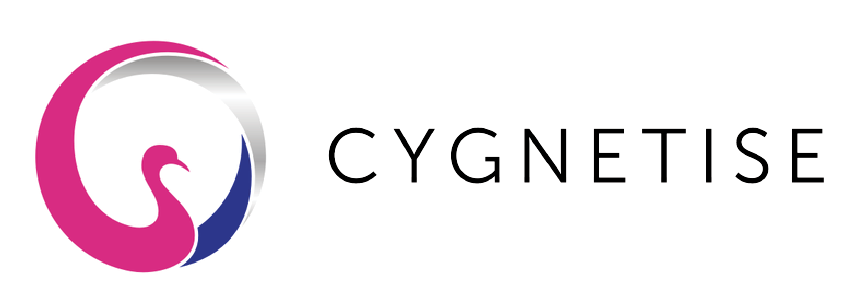Sealing the digital deal: The evolution of e-signatures from digital stamps to Adobe’s Digital Identity Gateway
Adobe's Digital Identity Gateway has revolutionised e-signing, transforming it from simple digital stamps to a secure, identity-verified authorisation process, pivotal for regulated sectors like financial services.
Moving to e-signatures? Contact us to see how Cygnetise complements the use of e-signatures within organisations, mitigating the risk of unauthorised personnel signing where they shouldn’t.
The evolution of e-signing, especially in the business context, has been significantly influenced by advancements in digital technologies and the major shift to remote working globally driven by the COVID-19 pandemic. The recent developments by Adobe, particularly the launch of their Digital Identity Gateway, mark a significant step in this evolution. In this article, we delve into these developments and their importance in regulated sectors such as financial services. We also look into the future of e-signing which will take signature authorisation a step further by integrating identity verification with the validation of signing rights, and the increasing role of signatory management applications like Cygnetise.
The rise of e-signatures in organisations
In recent years, there has been a noticeable shift in organisations towards remote working, accelerating the adoption of e-signatures. Traditional wet-ink signatures have become impractical in many business aspects, especially with the growing trend of hybrid work policies. This shift is not just about replacing physical signatures with digital ones; it involves ensuring higher levels of trust in the process where the signatory’s identity is also validated. The increasing availability of digital identity schemes from national governments or trusted private sector organisations like banks, has made it easier than ever to validate an e-signer’s identity. Additionally, global laws, often modeled on the EU's eIDAS Regulation, give additional legal weight to forms of e-signature that include ID verification.
Adobe's innovation: The Digital Identity Gateway (DIG)
Adobe has been at the forefront of the transformation of digital signatures. Its Acrobat Sign platform now offers advanced e-signature capabilities, improved integration with other Adobe products, enhanced security features like its recently launched Digital Identity Gateway (DIG), user interface improvements, and customisation and automation options. All these updates underline Adobe’s dedication to staying ahead of the curve and continually redefining the space. The integration of Acrobat Sign with systems like Microsoft 365 has also been a critical factor in driving adoption and efficiency in e-signatures.
Adobe’s DIG, allows organisations to deploy a variety of pre-configured third-party digital identity providers (IDP) in their signing workflows. This feature ensures agreements are signed quickly and safely while managing risk and protecting the organisation. With this launch, Adobe has introduced "verified e-signatures" which involve effective third-party verification of the signer’s identity, going beyond simple document checks or phone pin authorisations.
The future of e-signing: Beyond digital stamps
The future of e-signing is not just about putting a digital stamp or signature on a document and embracing digital transformation. It's about ensuring the highest standards of security and authenticity in online transactions. In regulated industries like financial services, the stakes are even higher due to the sensitive nature of the documents and transactions involved. Authenticating digital identities is thus becoming critical in the process, allowing for:
Enhanced security: It provides a robust defense against fraudulent activities. By ensuring that a signatory is indeed who they claim to be, organisations can significantly mitigate the risks of identity theft and related fraud.
Legal compliance: Many sectors are governed by stringent legal and regulatory frameworks that mandate verified identities in transactions, so digital identity authentication can facilitate compliance.
Building trust: In an increasingly digital world, establishing trust between parties in a transaction is crucial. Verifiable digital identities are one of the best ways to build that trust.
While digital identity verification will indeed play a major role in the evolution of e-signatures, it won't be sufficient for organisations to build the ultimate secure online transaction environment. To achieve the highest level of security, organisations must also ensure that e-signatories possess the actual, relevant rights to authorise and sign on their behalf. And this is where the increasingly important role of signatory management applications, like Cygnetise, becomes evident. These applications manage and automate the process of maintaining signatory lists and authorisations, enabling enhanced transactional security and workflow efficiency.
Union Bancaire Privée UK (ex-Kleinwort Hambros) reduces 95% of time spent on managing authorised signatories
Digital signatures’ impact on business resilience
The adoption of digital document processes and e-signature solutions has proven to be a sound investment for businesses, addressing both immediate and long-term needs. They drive resilience during challenging times and help businesses establish new ways of working that can boost productivity. For instance, a Forrester study commissioned by Adobe highlighted that digital document processes have become a business necessity, supporting business continuity, enabling new customer acquisitions during crises, and enhancing employee and customer satisfaction.
In conclusion, the evolution of e-signing is a clear indicator of how digital transformation is reshaping business processes. The developments from Adobe, including their Digital Identity Gateway, are pivotal in this change, particularly in regulated sectors. The focus has shifted from merely applying a digital signature to ensuring the validation of the signatory's identity and authorising rights, signaling a significant leap towards a more secure and efficient digital business environment.


